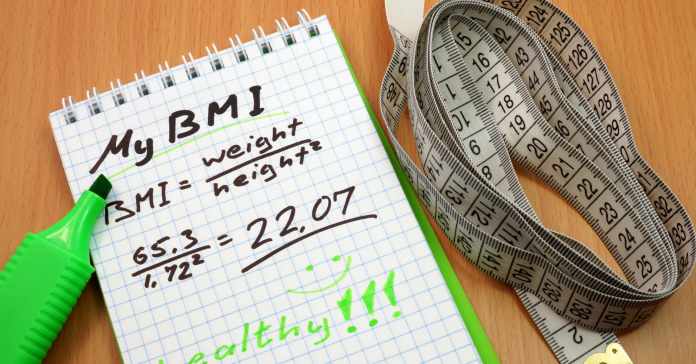In the case of the BMI ( Body Mass Index ) scale as regards male vs female, the numbers used to calculate the BMI are different according to gender. However the method of calculation is quite similar. For people aged between 2 and 20 years old, BMI takes into account age and sex, as the quantities of body fat can differ by age and vary by gender. For adults who are 20 or older, sex and age are not relevant but height and weight is whats being looked at here. The BMI is a standard, mathematical formula which aims to discover if people have a healthy weight. Anyone can use it. A person dividing their weight by their height will discover their BMI. This can be done by either the standard or the metric system of measurement.
How Can We Compare Male and Female?
Sometimes, this is not so easy as there are some factors in the difference between men and women. For example, in general, women are smaller in height than men. However, this is not always strictly true. This may affect females BMI ranges. They could possibly be lower than males. However, there is not a big difference in the ranges. Also, men will have more muscle than women, and women will naturally have body fat of a higher proportion than a man.
BMI Weight Ranges
There are 4 categories in the BMI scale, varying from underweight to obese. The categories, which are based on weight divided by height figures are as follows. A BMI lower than 18.5 is judged to be underweight. Between 18.5 and 24.9 is seen as being in the range of normal weight. Going from 25 to 29.9 falls under being overweight. And 30 upwards is felt to be in the obese range. By using a Smart Body Analyzer, you can easily discover what category you are in.
How Accurate Is The BMI Scale?
Over the years, the BMI scale has itself come into question as to whether it is the best
measuring system for weight and obesity. Some people feel it is quite old and dated. New ways of measurement using the circumference of the waist such as waist: hip ratio, or waist: height ratio, are felt to be better. Yet the BMI scale is still the most used and accepted test of obesity in men, women and children. It does have its issues though. The problem mostly revolves around the fact that BMI does not recognise the difference between muscle and fat. Fat does not weighas much as muscle, so the BMI is not accurate in gauging people that have a lot of muscle. So for example, a healthy, fit person bursting with muscles could get an overweight rating on the BMI scale. Wrongly, this person could feel they are at risk of heart disease at that judgement. A person that has small muscles but a high level of fat could receive a normal BMI rating and a false sense of security even though this is not good news as regards a healthy heart. This is why measurements of waist circumference are coming into use more. Fat on the stomach has been proven to have negative effects on heart health. Therefore, measuring this fat may be more important than judging by the BMI only.
How To Change Your BMI Scale Reading
Obviously, both men and women like to look their best. For happiness, for self confidence, possibly to attract a partner! Faring poorly on a BMI test has the potential to upset people in different ways mentally. Controlling of weight can sometimes be a very serious issue. Some people may unfortunately get very unhappy or depressed at the thought of looking or feeling a little bit chubby. It can be a sad feeling and they are not sure how to change this. For others, it could be the spur that they need to become physically active. Time spent in the gym or activity outdoors can help change their life, both physical and mental states. Confidence will return and positive feelings abound. Changes to diet and eating properly can also reduce a high BMI reading. Less junk food and snacks, replaced with healthy meals can make a big difference over time. Together, exercise and diet can take the weight off slowly. No dramatic changes have to be made, just be consistent and try to make healthy decisions.
What Are The Risks Of Being Overweight?
People who have a BMI of 25 and upwards are probably not in the best physical condition. They might not think too much about it now, but this could lead to serious health challenges in later life. Putting on a few extra pounds per year can add up dramatically. Excess body fat is felt to be unhealthy for a person’s body. Being overweight or obese can lead to problems such as high blood pressure, risk of strokes or heart disease, some forms of cancer, kidney disease or osteoarthritis just to name a few. Apart from the physical side of being overweight there is also the mental side to contend with. People may feel embarrassed or extremely shy over their size. Possibly feeling discriminated against or humiliated because of this. This can be quite harmful and is associated with lack of self worth or sadness.
What Are The Risks Of Being Underweight?
A BMI reading of under 18.5 is seen to be unhealthy as it is on the underweight range of the scale. For women, irregular periods can become a problem. Also there is the danger of giving premature birth if pregnant. Problems such as osteoporosis, malnutrition, anemia, constant tiredness and issues with skin, hair or teeth can become apparent over time if people are underweight. The immune system will be seriously weakened. People that have been defined as clinically underweight are at even more risk of dying than people who are obese. Again, just by making a few changes in lifestyle and diet, progression to a healthy weight can be achieved. Starting a simple workout plan could boost your weight by an increase of muscle while also reviving your appetite.


